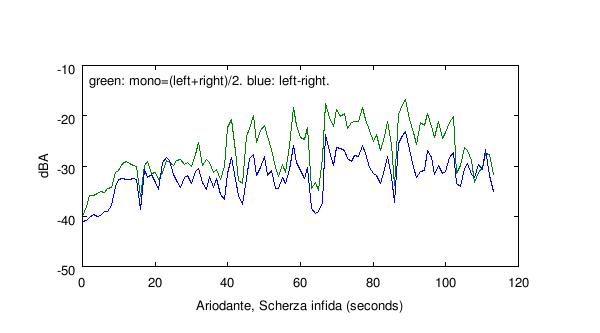
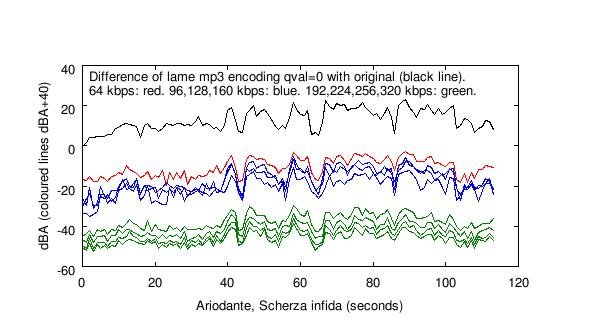
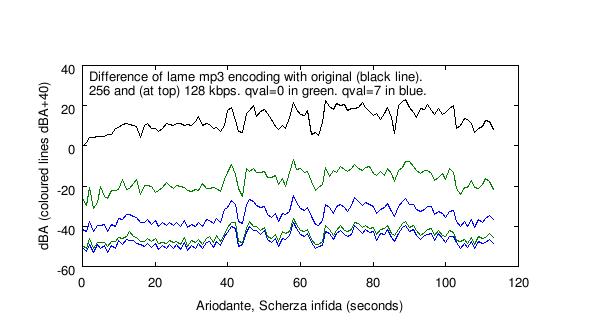
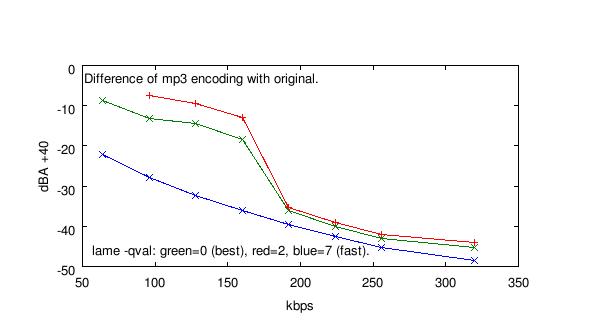
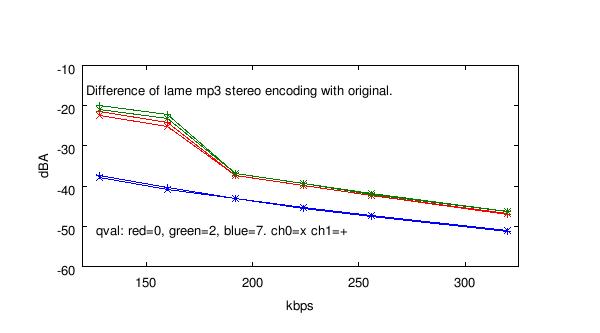
| file | left channel | right channel |
|---|---|---|
| lame-2-128.wav | 0.995996575 | 0.994915004 |
| lame-0-128.wav | 0.997202041 | 0.996359810 |
| lame-2-160.wav | 0.997611649 | 0.996931598 |
| lame-0-160.wav | 0.998505363 | 0.998059627 |
| lame-2-192.wav | 0.999899143 | 0.999898968 |
| lame-0-192.wav | 0.999906720 | 0.999905836 |
| lame-7-128.wav | 0.999919437 | 0.999906273 |
| lame-2-224.wav | 0.999941206 | 0.999943275 |
| lame-0-224.wav | 0.999946966 | 0.999947633 |
| lame-7-160.wav | 0.999959154 | 0.999954031 |
| lame-2-256.wav | 0.999967101 | 0.999968241 |
| lame-0-256.wav | 0.999970315 | 0.999970959 |
| lame-7-192.wav | 0.999975788 | 0.999975815 |
| lame-7-224.wav | 0.999985226 | 0.999986122 |
| lame-2-320.wav | 0.999988290 | 0.999988375 |
| lame-0-320.wav | 0.999989789 | 0.999989995 |
| lame-7-256.wav | 0.999990744 | 0.999991393 |
| lame-7-320.wav | 0.999995961 | 0.999996234 |
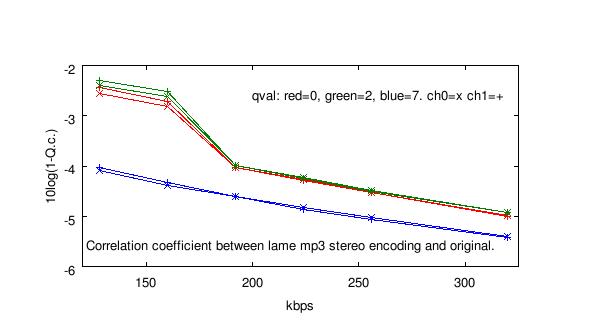
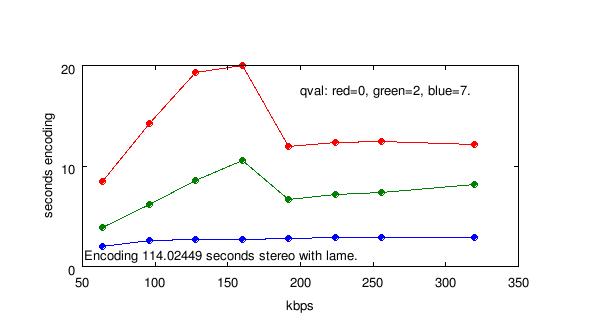
| bitrate |
resulting sampling_frequency
for mono |
resulting sampling_frequency
for stereo |
|---|---|---|
| 32 | 22050 | 16000 |
| 40 | 24000 | 16000 |
| 48 | 32000 | 22050 |
| 64 | 44100 | 24000 |
| 96 | 44100 | 32000 |
| 128 | 44100 | 44100 |
| 160 | 44100 | 44100 |
| 192 | 44100 | 44100 |
| 224 | 44100 | 44100 |
| 256 | 44100 | 44100 |
| 320 | 44100 | 44100 |
| Original WAV-file | filesize |
|---|---|
| fragment.wav | 8907310 |
| kpbs | mp3 lame qval= 0 encoded | mp3 lame qval= 2 encoded | mp3 lame qval= 7 encoded | filesize |
|---|---|---|---|---|
| 32 | lame-0-032.mp3 | lame-2-032.mp3 | lame-7-032.mp3 | 202320 |
| 40 | lame-0-040.mp3 | lame-2-040.mp3 | lame-7-040.mp3 | 253080 |
| 48 | lame-0-048.mp3 | lame-2-048.mp3 | lame-7-048.mp3 | 303281 |
| 64 | lame-0-064.mp3 | lame-2-064.mp3 | lame-7-064.mp3 | 404544 |
| 96 | lame-0-096.mp3 | lame-2-096.mp3 | lame-7-096.mp3 | 606960 |
| 128 | lame-0-128.mp3 | lame-2-128.mp3 | lame-7-128.mp3 | 808750 |
| 160 | lame-0-160.mp3 | lame-2-160.mp3 | lame-7-160.mp3 | 1010938 |
| 192 | lame-0-192.mp3 | lame-2-192.mp3 | lame-7-192.mp3 | 1213125 |
| 224 | lame-0-224.mp3 | lame-2-224.mp3 | lame-7-224.mp3 | 1415314 |
| 256 | lame-0-256.mp3 | lame-2-256.mp3 | lame-7-256.mp3 | 1617501 |
| 320 | lame-0-320.mp3 | lame-2-320.mp3 | lame-7-320.mp3 | 2021876 |
|
|
lame qval=0 vs. original | lame qval=2 vs. original | lame qval=7 vs. original | |||||
|---|---|---|---|---|---|---|---|---|
| kpbs | 1 × | 10 × | 100 × | 1 × | 10 × | 100 × | 10 × | 100 × |
| 128 | -45.51 dBA | -25.51 dBA | -44.01 dBA | -41.15 dBA | ||||
| 160 | -48.24 dBA | -28.24 dBA | -46.23 dBA | -26.23 dBA | -44.17 dBA | |||
| 192 | -40.81 dBA | -40.49 dBA | -46.69 dBA | -26.69 dBA | ||||
| 224 | -43.31 dBA | -42.90 dBA | -48.96 dBA | -28.96 dBA | ||||
| 256 | -45.84 dBA | -25.84 dBA | -45.43 dBA | -25.43 dBA | -31.01 dBA | |||
| 320 | -30.48 dBA | -29.86 dBA | -34.60 dBA | |||||
| content | samples | channels | duration S | filesize wav | filesize flac | filesize gz | flac/wav |
|---|---|---|---|---|---|---|---|
| Aria 'Scherza infida' | 331776 | stereo | 7.523265 S | 1327150 | 471082 | 1115615 | 1:2.817 |
| random noise | 368640 | mono | 16.718367 S | 737326 | 636378 | 668474 | 1:1.158 |
| silence | 368640 | mono | 16.718367 S | 737326 | 9312 | 826 | 1:78 |
| short file (random noise) | 16 | mono | 0.00036 S | 78 | 8350 | 117 | 107:1 |
| empty | 0 | (mono) | 0 S | 46 | error | 84 | -- |